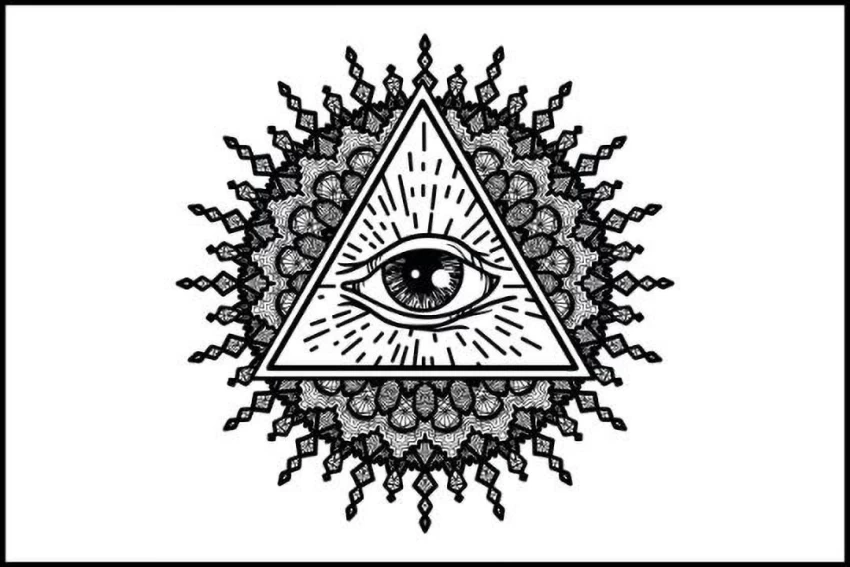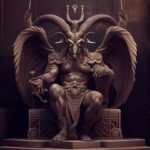The illuminati eye is one of the most recognized symbols associated with conspiracy theories and secret societies. Often depicted as an eye within a pyramid, this powerful emblem has sparked countless discussions about its origins, meanings, and implications. In this article, we will explore the history of the illuminati eye, its significance in various cultures, and how it continues to influence modern society.

What is the Illuminati Eye?
The eye is commonly referred to as the Eye of Providence or the All-Seeing Eye. This symbol represents an eye enclosed within a triangle or pyramid, often radiating light. While many associate this symbol with the Illuminati, its roots extend back to ancient civilizations and various religious contexts.
Historical Origins of the Illuminati Eye
The concept of the illuminati eye can be traced back to ancient Egypt, where the Eye of Horus symbolized protection, health, and restoration. This eye was often depicted as a human eye with distinctive markings, representing the god Horus watching over the people.
In addition to Egyptian symbolism, the illuminati eye has connections to Christianity. The Eye of Providence is often seen in religious artwork, representing the omniscience and benevolence of God. This symbol emphasizes the belief that God watches over humanity, guiding and protecting them.
The Illuminati Eye and Conspiracy Theories
The association of the eye with conspiracy theories began in the 18th century, particularly with the rise of the Bavarian Illuminati. Founded by Adam Weishaupt in 1776, this secret society aimed to promote Enlightenment ideals while opposing religious and political oppression.
- Symbol of Control: Many conspiracy theorists believe the eye represents a powerful elite that manipulates global events from behind the scenes. This notion fuels fears of a hidden agenda that aims to control the masses.
- Cultural References: The eye frequently appears in pop culture, from movies and music to video games. This visibility often reinforces its association with secret societies and global conspiracies, captivating audiences and sparking further intrigue.
The Illuminati Eye in Popular Culture
The eye has made its way into various forms of entertainment, creating a mystique around the symbol. Some notable examples include:
- Movies: Films like “The Da Vinci Code” and “National Treasure” feature the illuminati eye, weaving it into thrilling plots that explore ancient secrets and hidden truths.
- Music: Many artists reference the illuminati eye in their work, using it to convey messages of rebellion or to suggest deeper meanings. For instance, music videos often include imagery related to the eye, prompting fans to speculate about the artist’s intentions.
- Literature: Books about secret societies and conspiracies frequently mention the illuminati eye, appealing to readers’ fascination with hidden knowledge and the unknown.
Debunking Common Myths About the Illuminati Eye
Despite its prevalence in culture, many myths surrounding the illuminati eye persist. Let’s debunk some of these misconceptions:
- The Eye Represents Evil: While the eye is often depicted as a sinister symbol, its origins are rooted in protection and guidance. Its portrayal as a malevolent force is a product of modern conspiracy theories rather than historical fact.
- Only the Elite Use the Symbol: Many believe that only members or powerful elites can utilize the illuminati eye. In reality, the symbol has been adopted by various groups and individuals, each attributing their meaning to it.
- The Eye Is a Sign of Control: While some associate the eye with surveillance and control, it can also represent enlightenment and awareness. Many people view it as a reminder to seek knowledge and truth rather than fear.
The Illuminati Eye in Modern Society
It continues to be a potent symbol in modern society, reflecting our collective anxieties and desires for understanding. Its presence in art, media, and fashion showcases its adaptability and relevance.
Awareness and Education
Understanding the illuminati eye can encourage critical thinking and promote awareness of symbolism in our daily lives. By examining the history and meanings behind this emblem, individuals can gain a deeper appreciation for the complex relationships between culture, power, and belief.
The Symbol’s Role in Activism
Some activists use the illuminati eye as a symbol of resistance against oppressive systems. By reclaiming the symbol, they challenge the idea of an all-powerful elite and advocate for transparency and accountability in governance.
Th Eye and Its Impact on Art
Artists often incorporate the eye into their work to explore themes of knowledge, power, and perception. This symbol invites viewers to reflect on the relationship between what is seen and unseen in society.
Contemporary Art
Many contemporary artists utilize the eye as a motif to critique societal norms and question authority. Their work encourages audiences to challenge assumptions and seek deeper truths.
Conclusion: The Enduring Legacy
It remains a compelling symbol that transcends its origins. Its rich history, association with powerful ideas, and presence in modern culture demonstrate its ongoing relevance. By examining the it, we can better understand the complexities of human belief systems and the narratives that shape our world.








